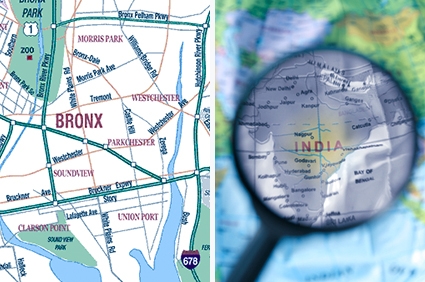
“Language, time and space.”
These were the barriers to providing effective diabetes education to patients that were repeatedly cited in a meeting of diabetologists, diabetic nurses and diabetes educators at a major academic medical center. Diabetes patients came to the clinic speaking a number of different languages, and often different dialects, which the doctors and nurses in the diabetes clinic had to switch among as fluently as possible. Family members accompanying patients were often called upon to do their best to translate. Visit times were necessarily limited by the long line of patients sitting in the waiting area. And clinic space was in demand, both for group education sessions and for one-on-one visits.
The only difference between this particular meeting and similar ones I’ve participated in previously is that this meeting was taking place at Christian Medical College (CMC) in Vellore, India. The medical team members were all from India, as were the patients, but the concerns and challenges faced by the diabetes team at CMC were exactly the same as those frequently recounted by diabetes care providers here in the Bronx.
At CMC, providers struggled with the many languages patients from different states throughout India speak; Tamil, Malayalam, Kannada and Hindi were the major ones spoken by patients at this South Indian hospital, while among themselves the medical team members communicated in English. In the Bronx, diabetes patients speak Spanish, Albanian, Vietnamese, Tagalog, Igbo and a range of other languages from around the world, with English serving as a fragile lingua franca, often not suitable for discussing complex care plans or explaining the larger concepts essential to effective diabetes management.
Time is also one of our biggest challenges in the Bronx, with ever-increasing amounts of documentation required per diabetes visit, and seemingly ever-increasing numbers of diabetes patients in need of appointments. Space is a perennial problem in our crowded clinics as well.
As an Endocrine Fellow from Albert Einstein College of Medicine visiting CMC Vellore for the first time, I expected to find similarities in the approach to diabetes management between India and the Bronx. Care standards are similar at major academic centers worldwide, and medications may go by slightly different names, but the classes of therapeutic agents available are the same.
But I was startled by how perfectly the stresses and barriers faced by the diabetes team in Vellore mirrored those faced by our diabetes team in the Bronx. After the meeting at CMC, care team members approached me to ask my thoughts on the challenges they described, and to compare their problems to ours in the United States. They were equally surprised when I told them our challenges are exactly the same, word for word.
The meeting and subsequent discussions highlighted our two institutions’ mutual mission of improving diabetes care and education worldwide, and underscored the interconnectedness among physicians, nurses, educators and patients working to make headway against the global diabetes epidemic.

